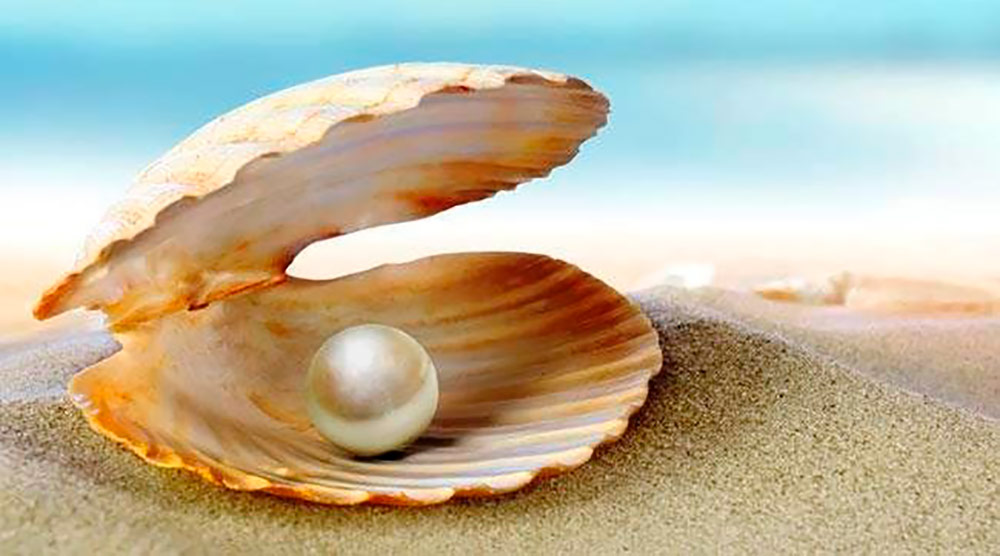The story referred here are unusual, but very well documented events, occurring between 1515 and 1545, which are equivalent to a small laboratory, a sample of what today was happening on a large scale on Earth.
Few people know what Cubagua is, except the Venezuelans, and yet most people do not know the facts that occurred there 500 years ago. Cubagua is an island located to the northeast of Venezuela, very close to the coasts of the east, it forms part of the insular group Margarita, Coche and Cubagua, discovered by Cristopher Columbus, in 1498. Its barely 6 km long by 4 km wide, its lack of fresh water and barren soil, were not at all sympathetic to its economic importance, owing to the immense oyster banks of splendid pearls hidden beneath its waters. This treasure was the most coveted until that time, as precious as gold, since the golden metal would only appear abundantly before European eyes in the Aztec empire in 1519 and the Inca in 1532.
Beginning in 1523, many people from Hispaniola (today the island occupied by Haiti and the Dominican Republic) and prominent businessmen from Europe and Spain moved to Cubagua, bringing their families with them. Overnight Nueva Cádiz flourished, an elegant city of “straight and well-marked streets”. The main one was three hundred meters long. Some houses were luxurious, “tall and towering,” built of stones, with spacious warehouses and docks, as well made as if that pearly resource would be infinite and the city designed for a thousand years.
The intensity of the exploitation of pearly pleasures between 1520 and 1525 was such that ten thousand marks of pearls were declared, equivalent to about 2.27 tons. At that time, there was no notion about the reproduction cycle of the mother-of-pearl and no prohibition was enacted to grant them a truce to reproduce. 1527 was the year of greatest extraction, with almost 1.4 tons declared. Since then production plummeted. Between 1537 and 1540 an average of less than 12 kilos of annual pearls was declared.
In 1530 two streets of New Cadiz were already depopulated; In 1532 the possibility of moving the city to land was discussed, the following year they asked the judge of residence to pass to Margarita; In 1537 this same request was formalized to the emperor and in 1539 several “lords of canoes”, the owners of the oyster’s fisheries, obtained permission of the Crown to move to Cabo de la Vela, a small bay located in the Guajira, in Colombia. The canoes were manned by fifteen or twenty Indians and daily extracted between six and seven marks of pearls, on average twice as much as they had in Cubagua. The activity here also declined speedily, though not only because of the exhaustion of the mother-of-pearl but because of the belligerent attitude of the Guajiro Indians.
It took less than 20 years to slash a work formed over millions of years by nature. From 1545 to New Cadiz like a cemetery. The huge and elegant buildings, designed for a millennium, were abandoned in less than two decades, as silent witnesses to the great predation done by exotic beings called homo sapiens-sapiens, something like “wise men who think.”
But these men did not think about the future, like some humans today, like those who hurled two-thirds of the jungles of Borneo (link Borneo I) without thinking that it was the largest plant lung in Southeast Asia, where local climate change is already a fulfilled fact (link Borneo II). The Amazon rainforest is also being depleted and seems to have the same destiny as the forests of the third largest island in the world. Thousands of times it has been repeated that the Amazon rainforest is the purifier of the planet’s air, but like five hundred years ago, everything indicates that in a few decades the magnificent forests will become deserts and, if these mega depredations do not stop, Humans will witness the greatest planetary catastrophe ever imagined.
But what happens in Amazonas and in Borneo not only happens in these privileged jungles with great dangers of extinction of species, many already in terminal phase. The oceans are also depopulated, as we know from the news reports of the rapid decline of whales, fish and other “edible” species, which can become a biological imbalance of great proportions. It is possible that due to its complexity, science has no answer and is not able to construct a model to anticipate the future.
To conclude, we must emphasize that Cubagua, with its early ecological catastrophe, its small size, its only valuable and abundant species, and the speed with which its population of mother-of-pearl was extinguished, can serve as an example to understand the problem of large and Complex extinctions of species. Due to its simplicity, the Cubagua case can be taken as a “unit of understanding and measurement” to understand, quantify and regulate the intensive and excessive extraction of natural resources of our planet by humans.
Sandor Alejandro Gerendas-Kiss
Note:
The historian Enrique Otte did a monumental work, “Las perlas del Caribe: Nueva Cadiz de Cubagua” a 620-page book, full documented on Cubagua and what happened there, which may be useful for an in-depth study.
Sources:
OTTE, ENRIQUE
The Pearls of the Caribbean. New Cadiz of Cubagua.
John Boulton Foundation 1977. Caracas, Venezuela
GERENDAS-KISS, SANDOR ALEJANDRO
Colonial History of Venezuela. The birth of a country. 1506-1561
Retrieved from https://sgkplanet.com/el-nacimiento-de-un-pais







Leave A Comment